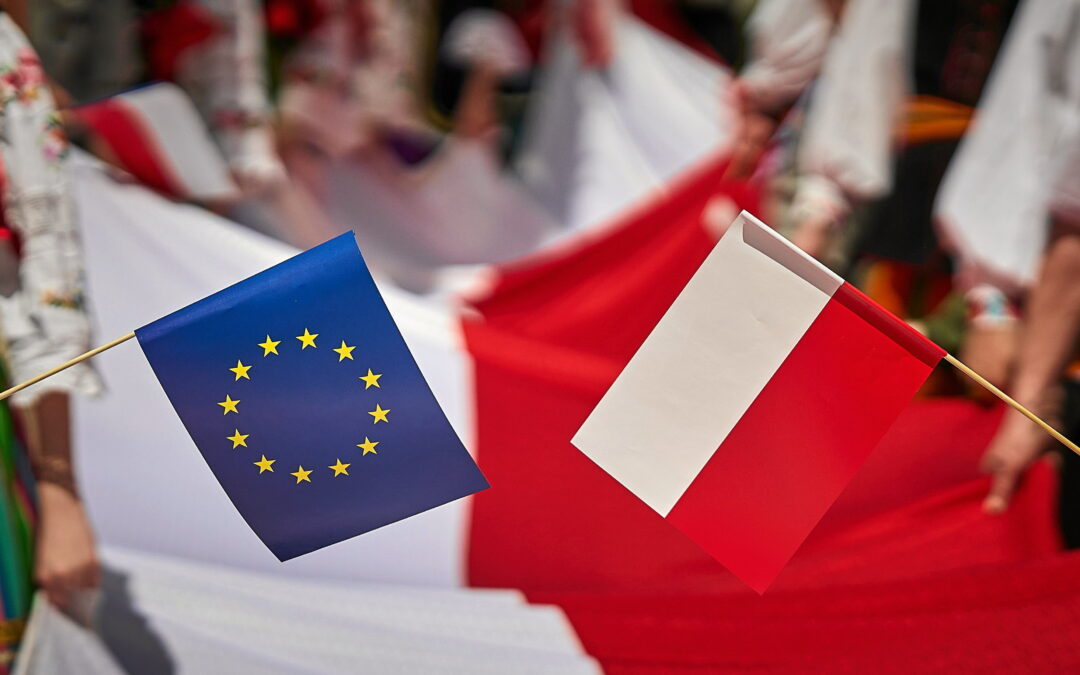By Alicja Ptak
At the start of this month, Poland celebrated the 20th anniversary of joining the European Union.
During this time, the country has experienced unprecedented growth, from the size of its economy to the length of its motorways. To mark the occasion, we have prepared 20 charts showing the changes that have taken place in Poland during this time.
1. Strong support for membership
Over the past 20 years, a consistently large majority of Poles have expressed support for EU membership, according to data from state research agency CBOS.
The lowest figure, of 60%, was recorded in February 2004, just before Poland joined the EU. The highest support, of 92%, came in April 2022, just after Russia’s invasion of Ukraine.
Since then, however, support from the Polish public has fallen to 77%, the lowest level since 2013.

2. Trust
Although support for membership has remained high over the years, the proportion of people declaring trust in the EU is always lower, according to the European Commission’s Eurobarometer survey.
However, Poland’s figures are consistently higher than the EU average.
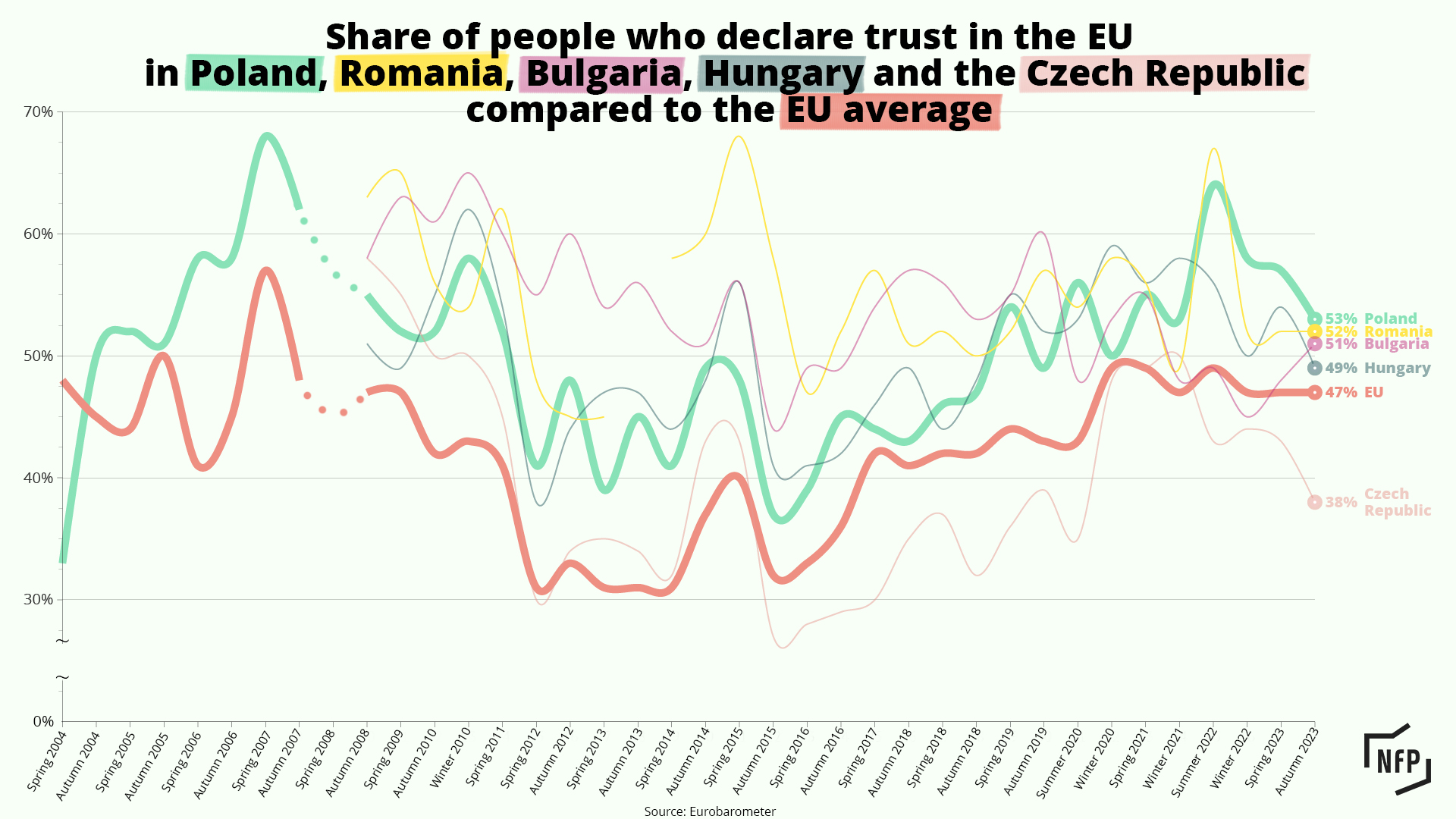
3. Rapid growth
Poland’s economic growth accelerated after its entry to the EU and, between 2004 and 2022, its nominal GDP increased by nearly 170% to $688.13 billion, according to World Bank data.

4. A prodigy, even among its peers
Real GDP, which is adjusted for price differentials, grew by 100% during this period, the most among any of the eastern member states that joined the EU in 2004, according to calculations by Polish bank Pekao.
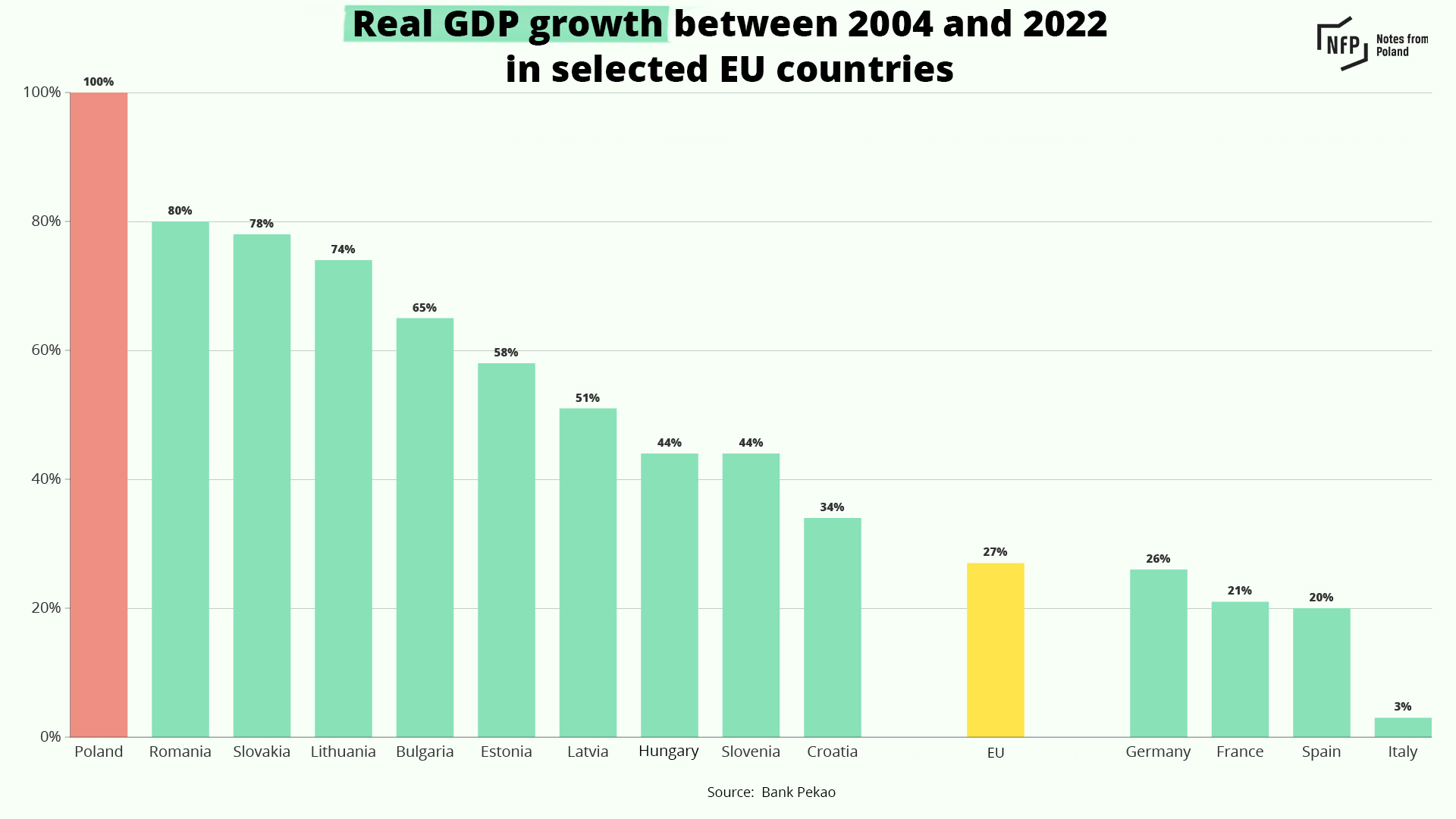
5. Slow and steady wins the race
Poland has also increased significantly in the EU’s standard measure of affluence: GDP per capita taking account of price differences (purchasing power standards, PPS).
When Poland joined the bloc its GDP per capita in PPS was only 51% of the EU average. Last year, it reached 80%, according to a flash reading of the data.
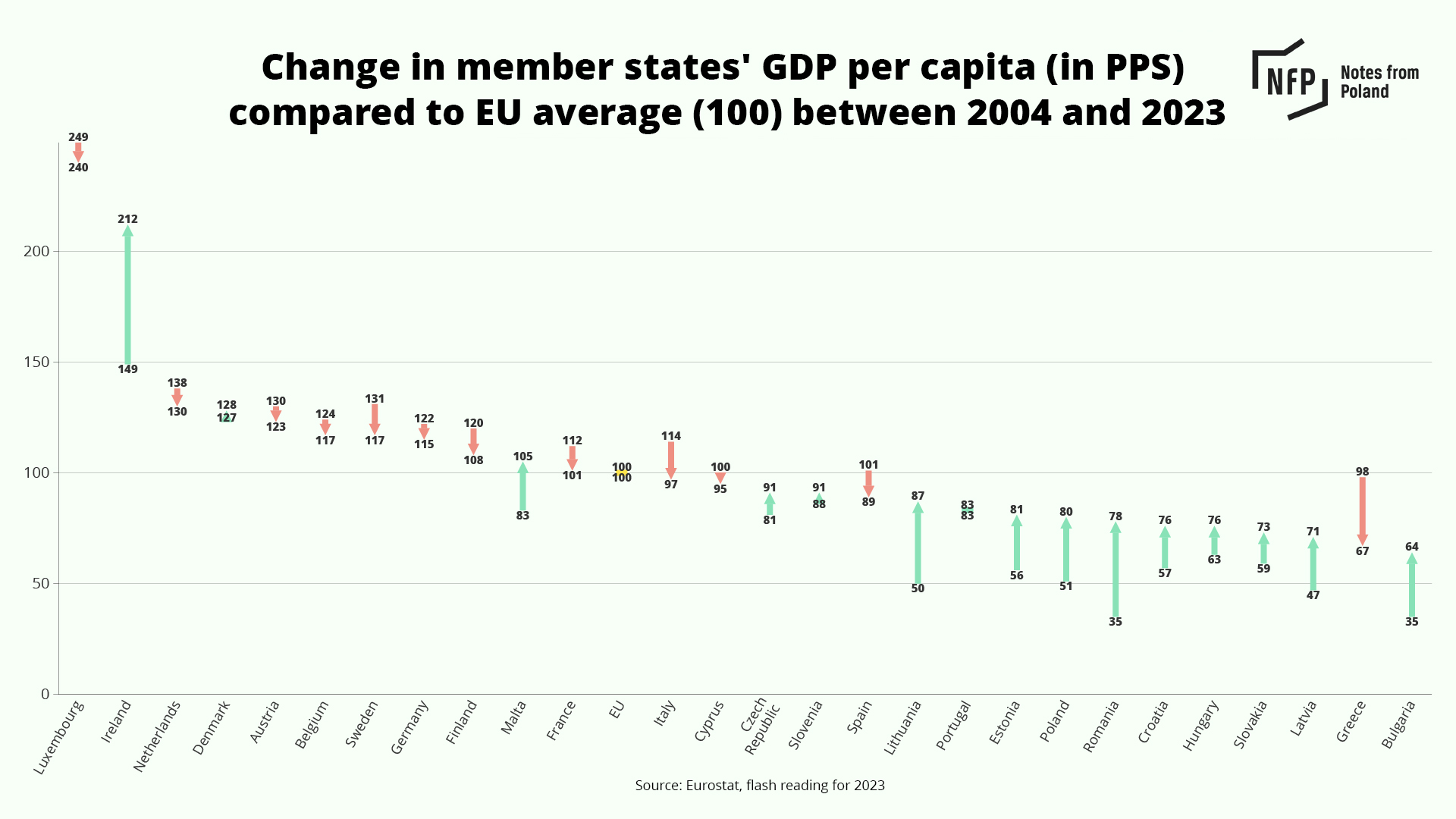
6. Beyond GDP
Poland has also moved up in the Human Development Index (HDI), which alongside wealth takes into account factors such as life expectancy and number of years spent in school. In 2022, Poland achieved a score of 0.881 on a scale of 0 to 1, the second highest in its region after the Czech Republic.
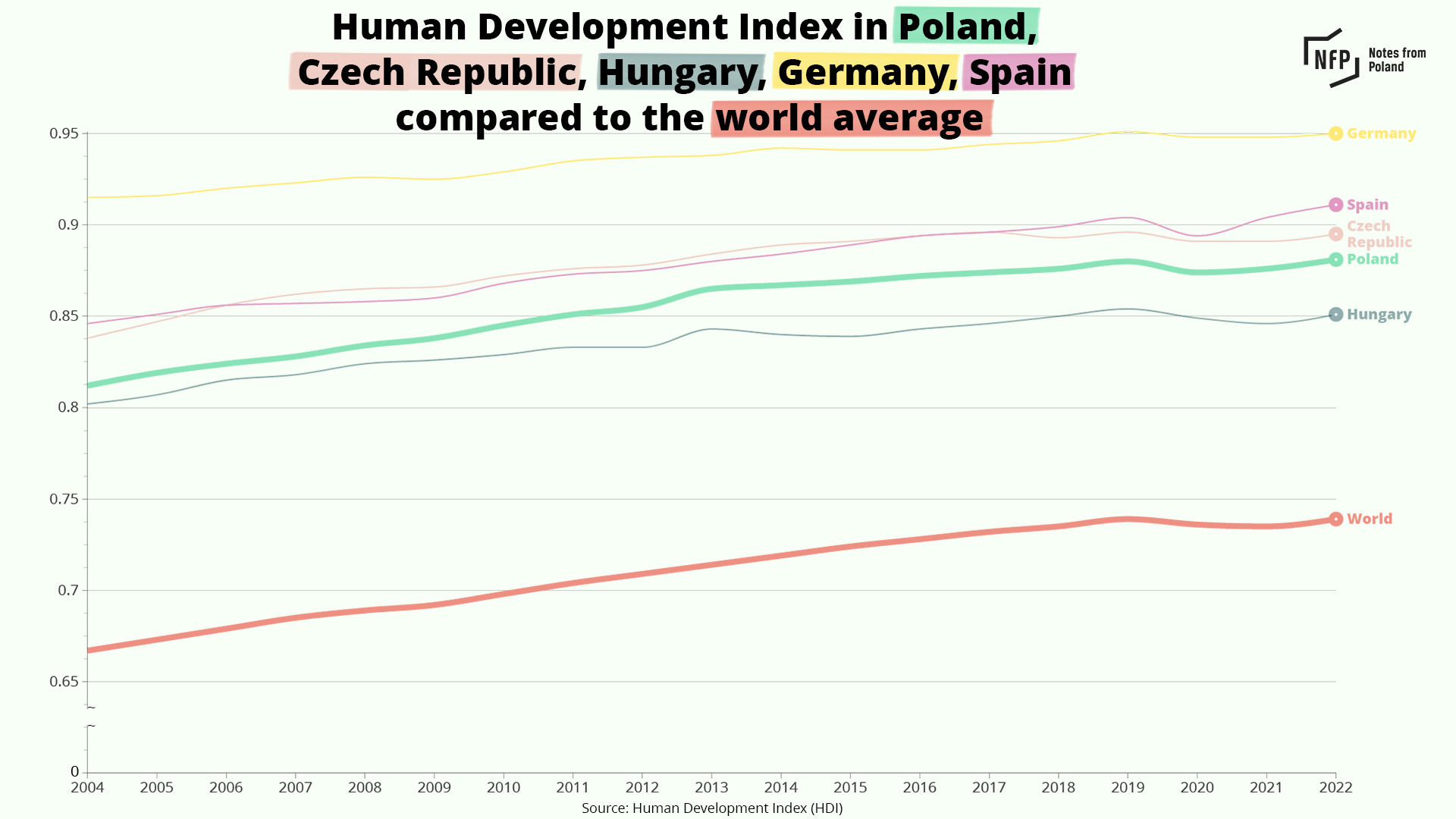
7. Poles are living and learning longer
Poland has shown an improvement in the individual factors that make up the HDI.
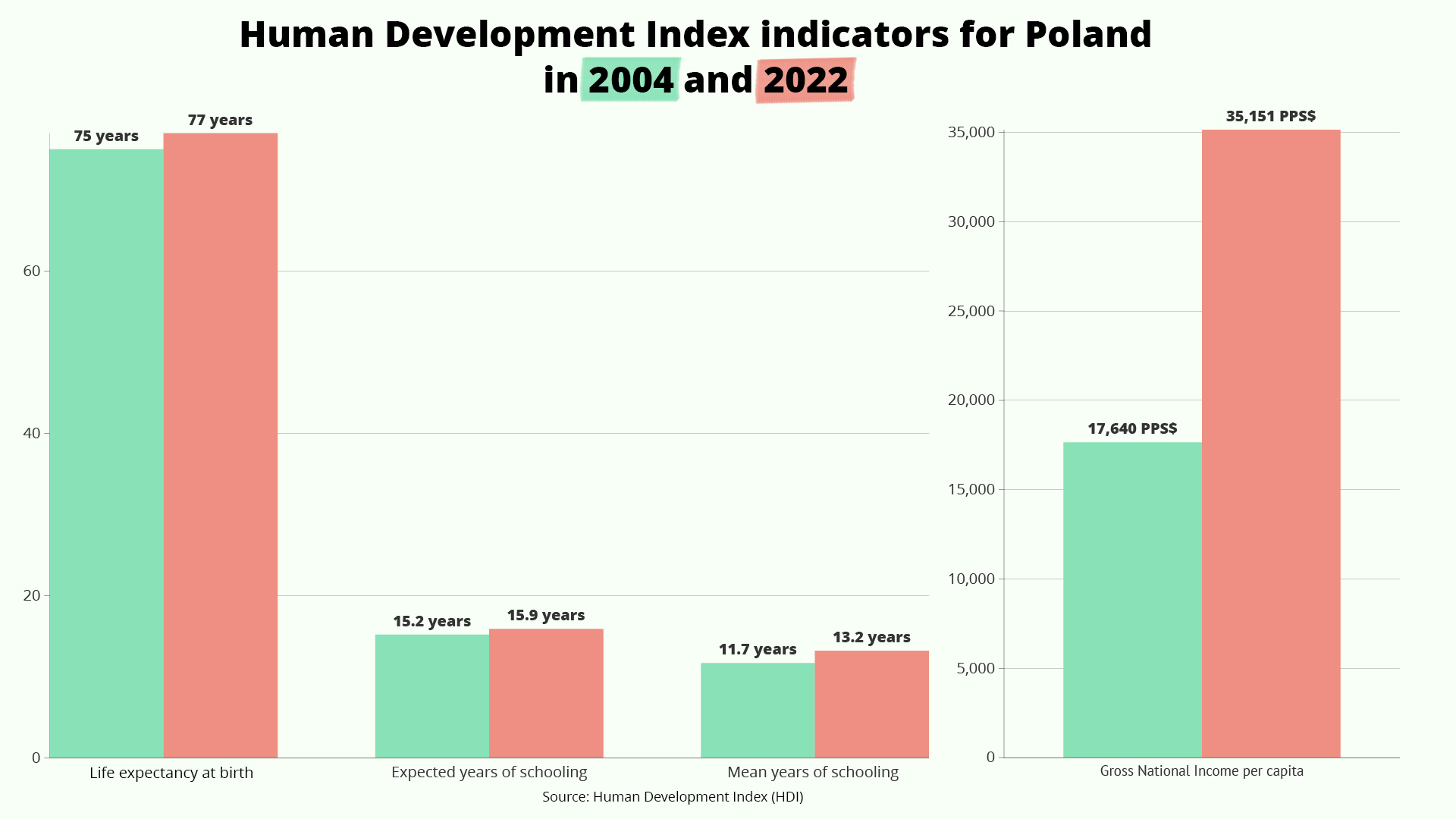
8. The biggest net beneficiary
Poland is the largest net beneficiary from the EU budget, receiving nearly €12 billion more than it paid in 2021.
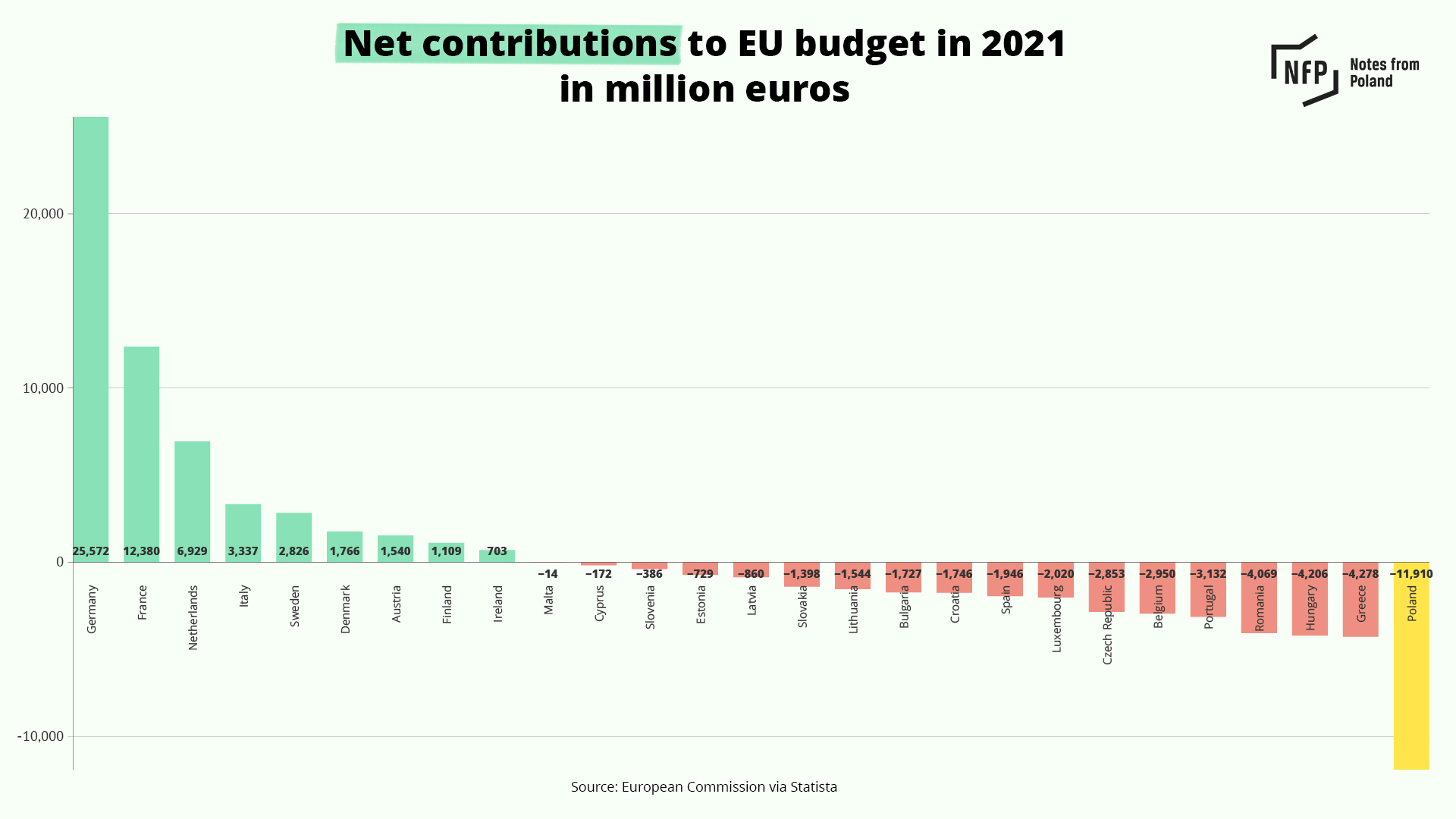
9. Contributions per capita
In per capita terms, however, Poland is only the eight biggest beneficiary of the EU budget.
10. Contributions vs receipts
Poland’s contributions have been increasing, but it still receives more than twice as much as it is paying into the EU budget.

11. Lifting Poles out of poverty
Economic success has also translated into helping many Poles out of poverty. Over the past 20 years, the share of people at risk of poverty or social exclusion has fallen the most in Poland among all countries in the region.
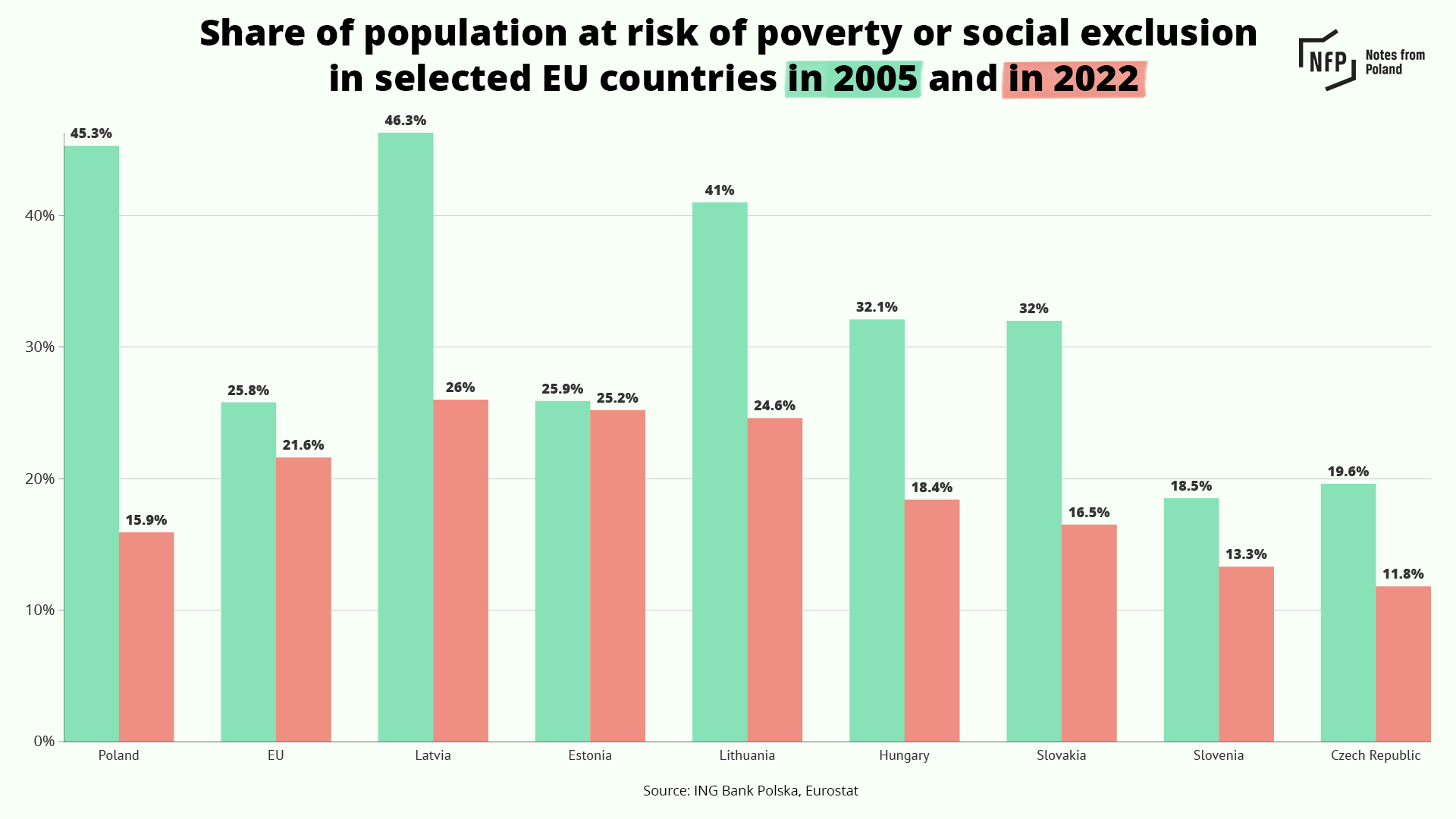
12. Rising wages
In the 20 years of Poland’s EU membership, the nominal average salary has increased by 267% to 8,409 zloty (€1,942) gross in April 2024, and the minimum salary has increased by nearly 415% to 4,242 zloty (€980) gross.
From July 2024, the minimum wage will be bumped further to 4,300 zloty (€993).
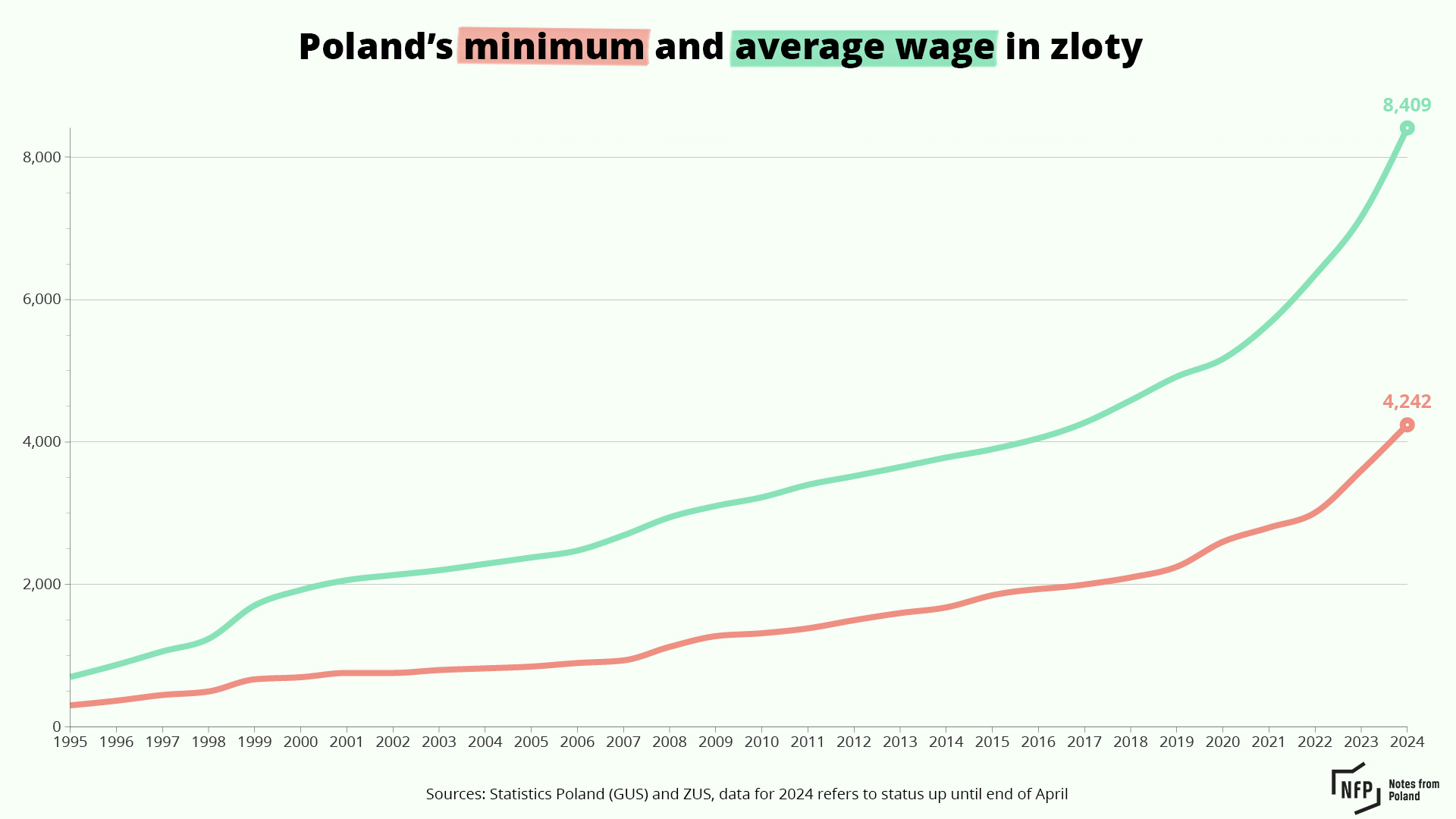
13. Low unemployment
Rising salaries have also been coupled with a falling rate of unemployment, which in recent years has regularly been one of the lowest in the EU.

14. Changing nature of migratory flows
In the years after Poland joined the EU, many Poles emigrated to other European countries to look for better jobs. In recent years, however, many have returned and the country – once associated with emigration – has begun to attract many immigrants with its robust job market and good living conditions.
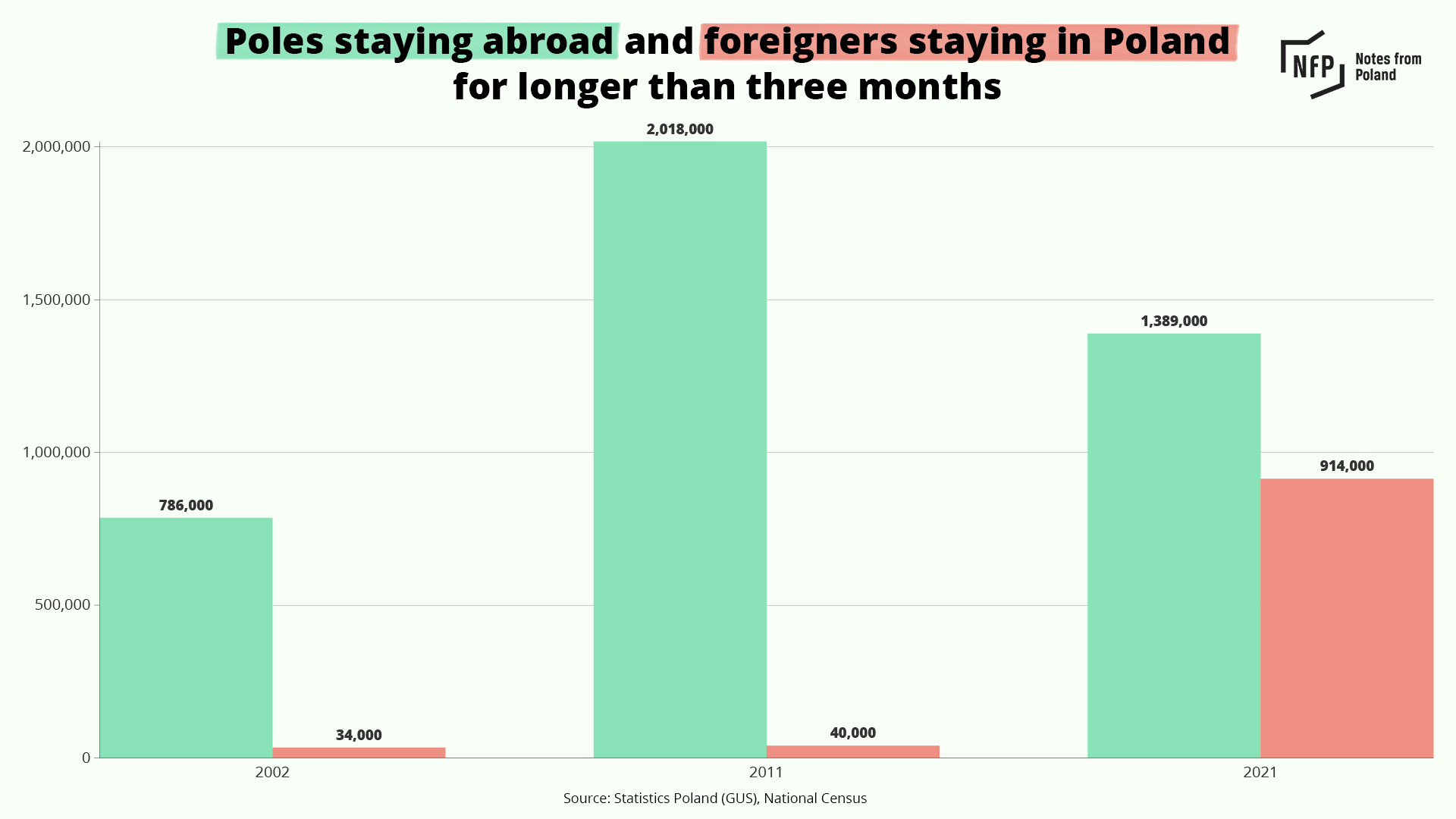
15. Foreign students
Since Poland’s accession to the EU, the proportion of foreign students among all students enrolled in Polish universities has also increased significantly, from 0.5% in 2004 to 8.5% in 2022.
In the 2022/23 academic year, the number of foreign students at Polish universities exceeded 100,000 for the first time.
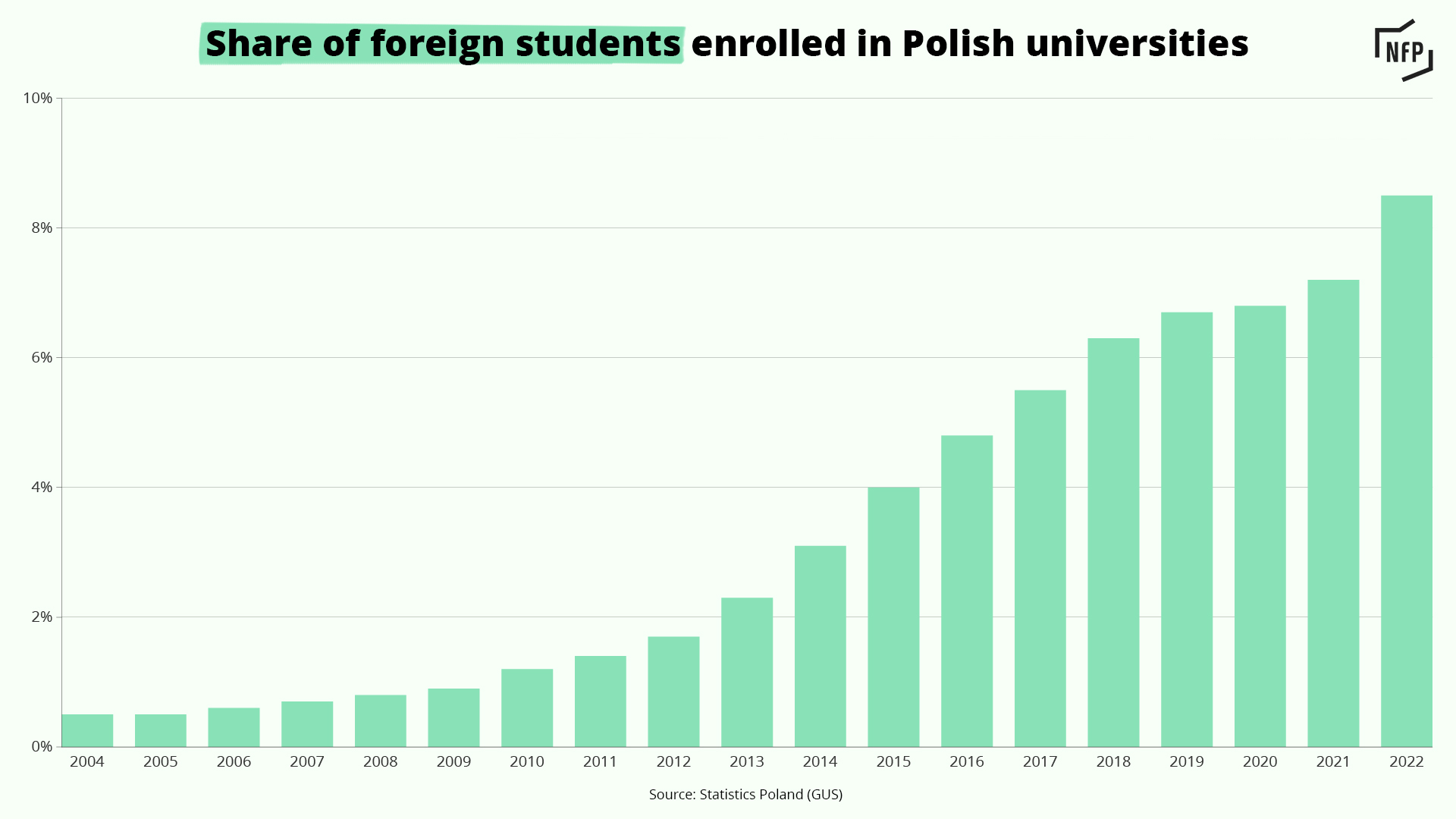
16. Improving infrastructure
Poland’s EU membership has also accelerated investment in infrastructure. From 2004 to the beginning of 2024, the length of expressways and highways in Poland increased by more than 550% to 5,117 kilometres.
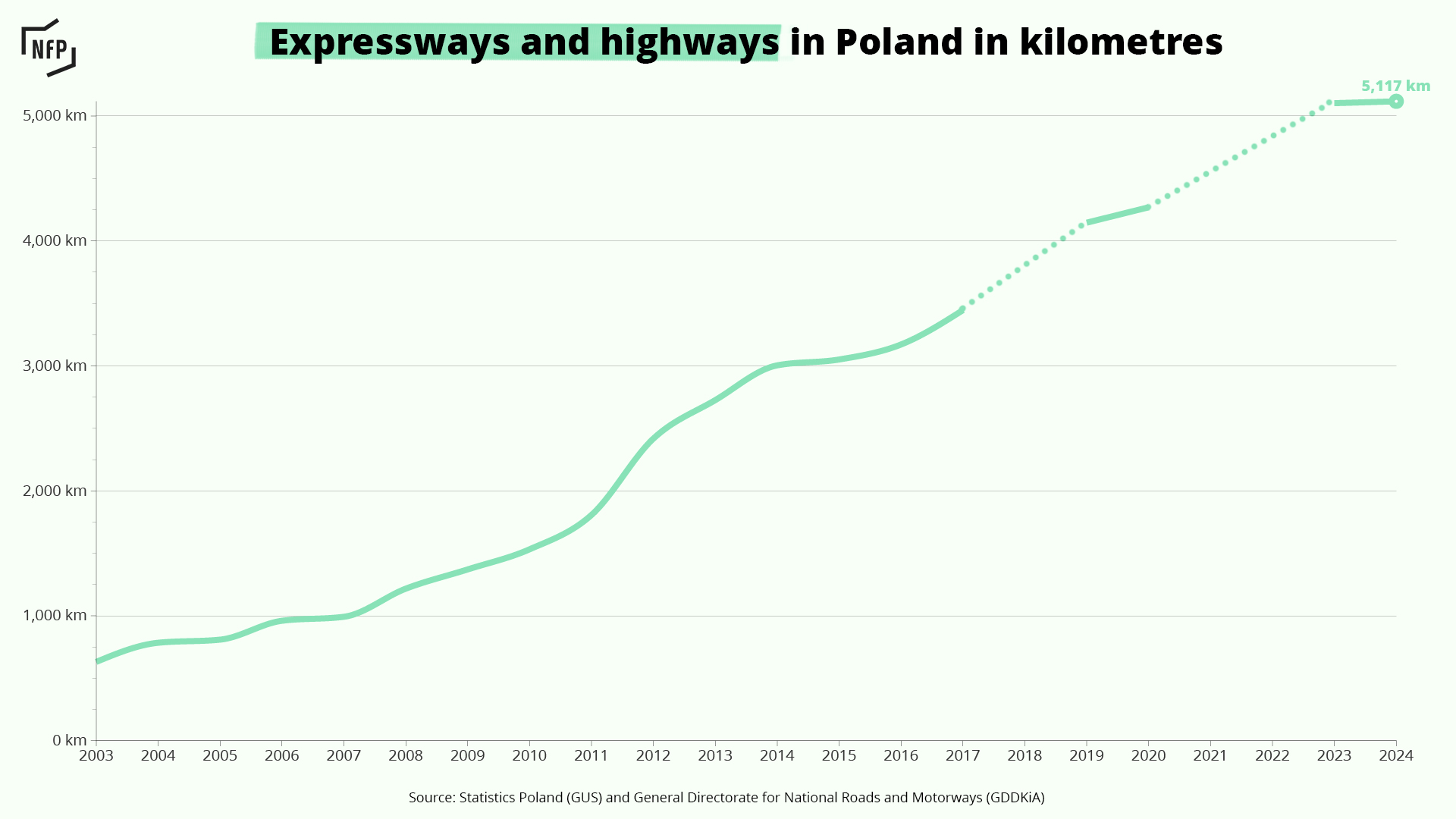
17. Bikers welcome too
Poland has also improved its network of cycling routes. According to Statistics Poland (GUS), a state agency, the total length of the network of cycle paths in 2011 was close to 5,800 km, while in 2022, it exceeded 19,800 km.

18. The sky is the limit
The number of people using Polish airports has also increased substantially, reaching 52 million in 2023, nearly six times higher than in 2004.
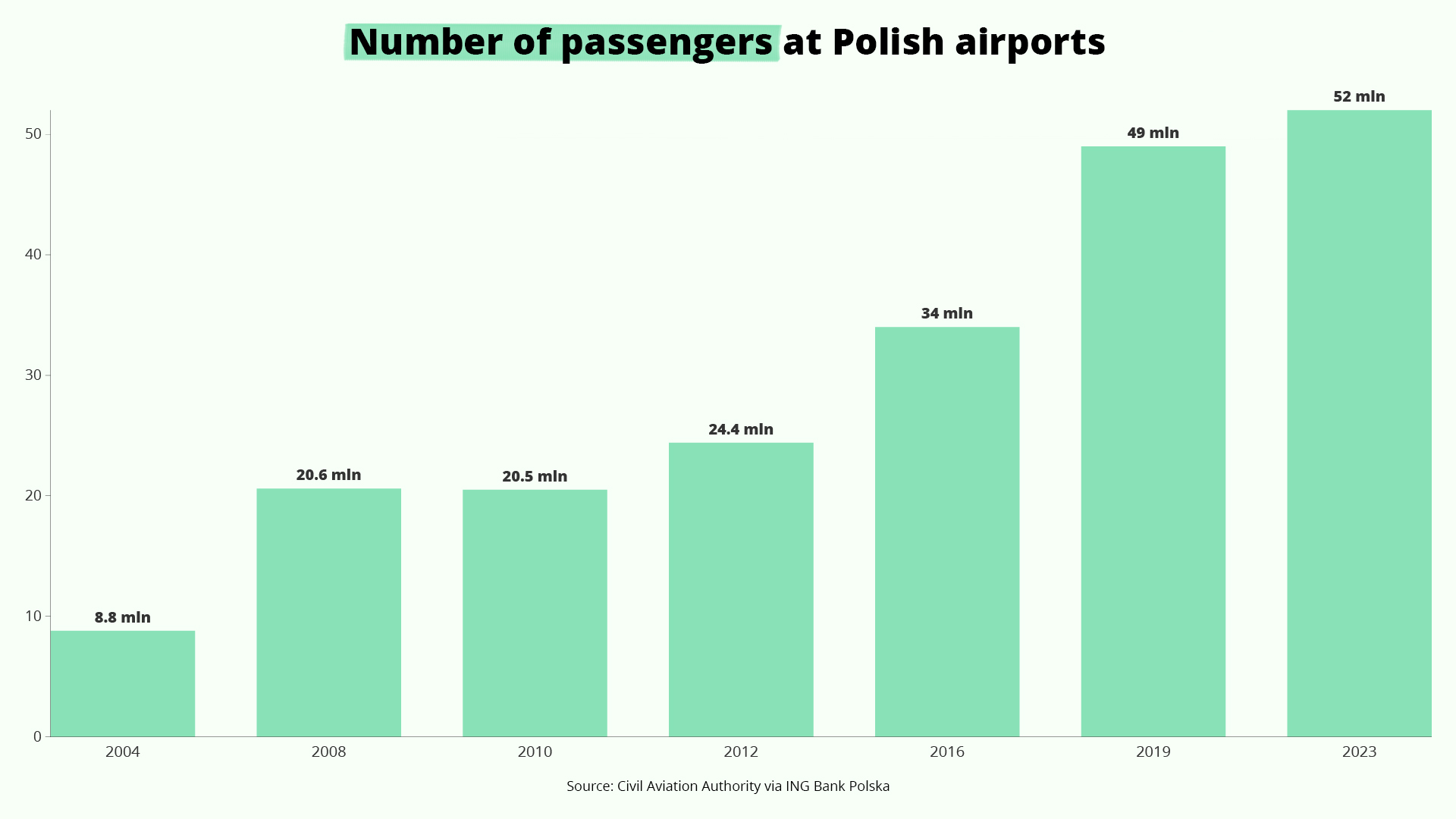
19. Construction boom
Growing wealth has been accompanied by a boom in construction over the last two decades.
However, there is still a shortage of housing in Poland, which means that prices are also rising sharply. In the final quarter of 2023, Poland recorded the largest increase in housing prices in the EU.
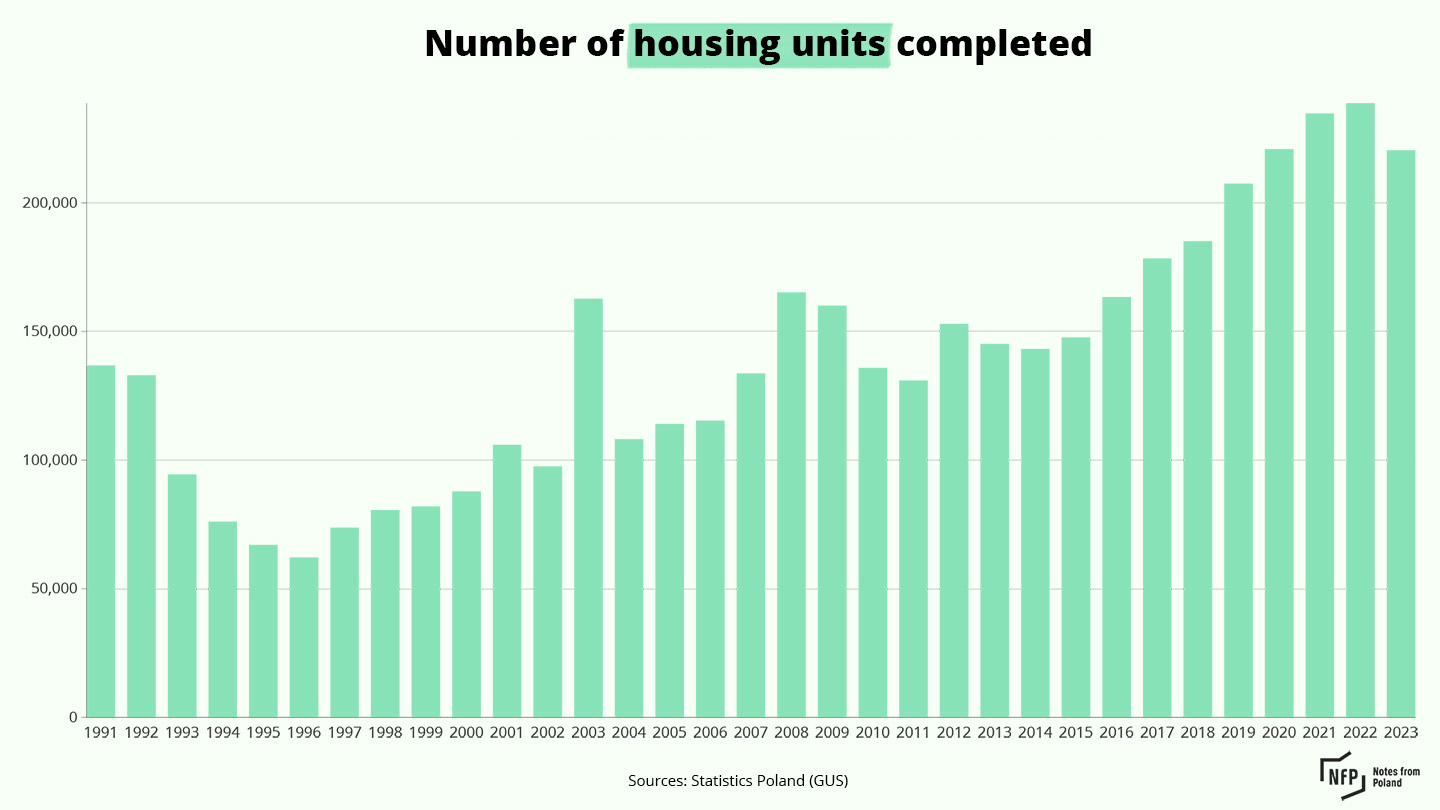 20. Emissions
20. Emissions
Alongside the growth in Poland’s economy, its emissions have also risen. When it joined the bloc, its CO2 emissions per person were lower than the EU-wide figure, but they are now significantly higher.
In per capita terms, it is the bloc’s fifth highest emitter, while in terms of emissions per unit of GDP, it is second.
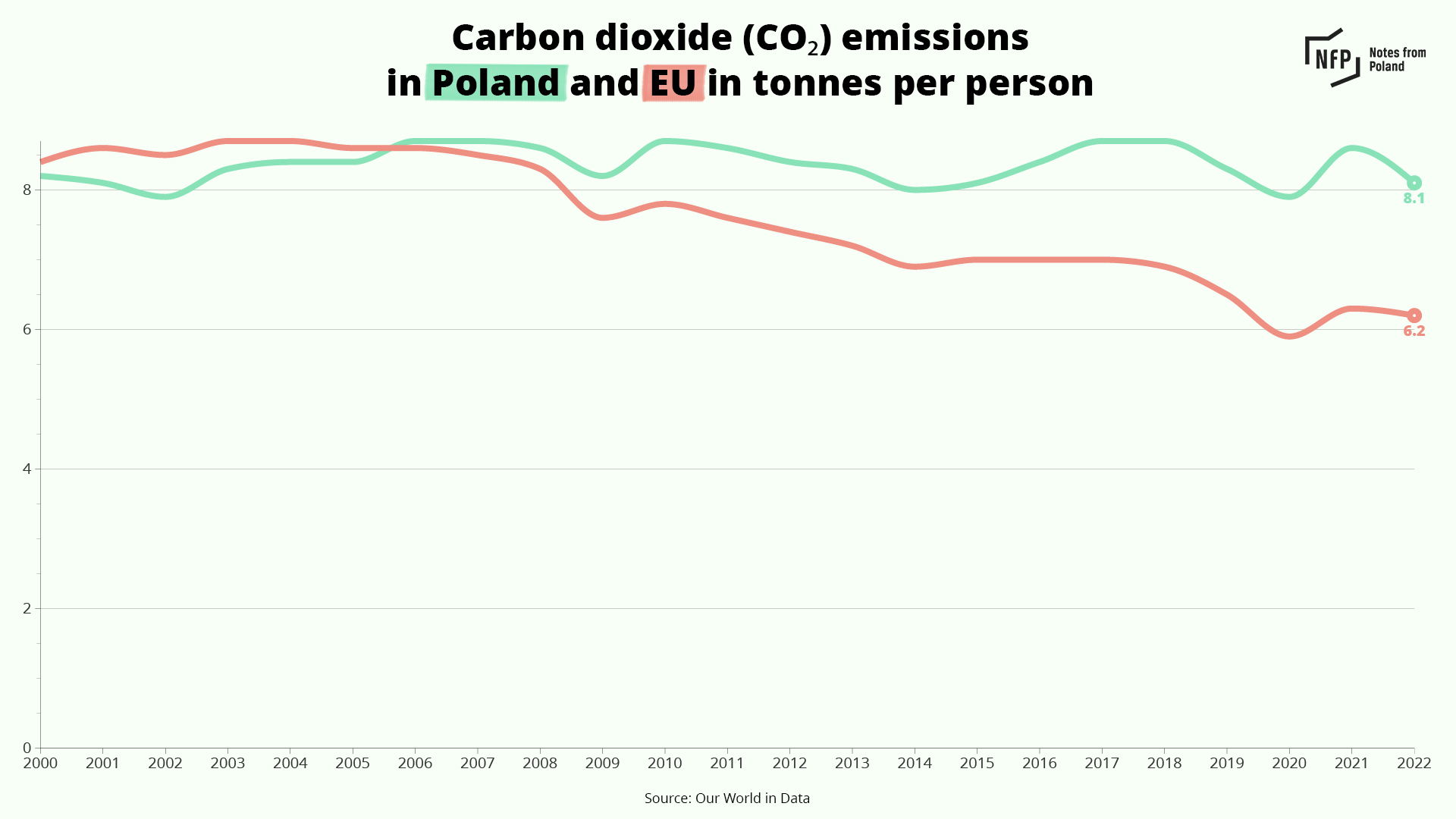

Notes from Poland is run by a small editorial team and published by an independent, non-profit foundation that is funded through donations from our readers. We cannot do what we do without your support.
Main image credit: Tomasz Stanczak / Agencja Wyborcza.pl

Alicja Ptak is deputy editor-in-chief of Notes from Poland and a multimedia journalist. She has written for Clean Energy Wire and The Times, and she hosts her own podcast, The Warsaw Wire, on Poland’s economy and energy sector. She previously worked for Reuters.
